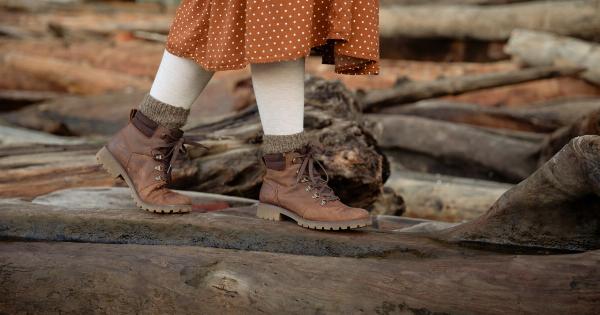Winter can be a beautiful season, with snow and ice creating a picturesque landscape that’s just begging to be explored.
However, walking outdoors in the winter can also be dangerous, with slippery conditions, cold temperatures, and reduced daylight hours to contend with. Fortunately, with the right preparation and strategies in place, it’s possible to safely enjoy the winter scenery while getting some exercise at the same time.
1. Dress Appropriately
One of the keys to enjoying a winter walk is to dress appropriately. This means wearing several layers of warm clothing, a jacket or coat, a hat, gloves or mittens, and a scarf.
It’s important to choose clothing that is both warm and moisture-resistant, as you don’t want to end up feeling damp or uncomfortable while you’re out walking. Additionally, wear comfortable and supportive shoes with good traction that can grip the ground and prevent slips and falls.
2. Light it Up
In the winter, the days are shorter, and it can get dark quickly. For this reason, it’s essential to ensure that you wear bright or reflective clothing and carry a flashlight or headlamp.
Not only does this make you more visible to other people, but it can also help you navigate any icy or uneven terrain you may encounter.
3. Plan Your Route
Before heading out on a winter walk, it’s important to plan your route carefully. Choose a well-lit and frequently traveled path, and stay away from areas with little or no mobile phone coverage.
Also, avoid walking near frozen bodies of water, as you never know whether the ice is strong enough to support your weight. Consider letting someone know where you intend to walk and your expected time of arrival in case of an emergency.
4. Take Care on Ice
Icy conditions are one of the most significant winter walking hazards. To reduce the risk of falls and injuries, walk slowly and carefully, taking small steps.
Pay attention to the ground beneath you, looking for areas of smooth or glossy ice that may be more slippery than others. Also, avoid rushing and making sudden movements, which can increase instability.
5. Hydrate and Fuel Up
It’s easy to forget about drinking fluids when the temperature is low. However, staying hydrated is still essential when you’re walking outside.
Carry a thermos of hot tea or soup and drink plenty of water throughout your walk to ensure your body stays hydrated. Additionally, pack some energy-rich snacks like nuts, dried fruit, and energy bars or gels to keep you fueled and energized while on the go.
6. Stay Aware of Weather Conditions
Winter weather can be unpredictable, with sudden flurries of snow or freezing rain that can make walking conditions much trickier. Check the weather forecast before setting out and keep an eye on conditions while you’re walking.
If the weather suddenly changes, consider cutting your walk short or taking a break at a nearby café or restaurant until the worst of the weather has passed.
7. Warm Up and Cool Down
Just like any other form of exercise, it’s important to warm up before starting a winter walk and cool down when you’re finished.
Before starting your walk, spend a few minutes doing some gentle stretches to loosen up your muscles, and take the first few minutes of your walk to build up your pace slowly. When you’re finished walking, allow yourself time to cool down, walk at a slow pace, and do some more gentle stretches to help prevent soreness.
8. Carry a First Aid Kit
In case of an emergency, it’s always a good idea to carry a small first aid kit with you when you’re walking. Pack some basic supplies such as bandages, antiseptic wipes, and pain medication.
Consider taking a first aid class before setting out, so you’re better equipped to deal with any injuries that may occur.
9. Stay Safe and Have Fun
Walking in the winter can be a fantastic experience, but it’s vital to take the necessary precautions to stay safe.
By dressing appropriately, planning your route, taking care on ice, staying aware of weather conditions, and carrying a first aid kit, you can minimize the risks and focus on enjoying your winter walk. Above all, remember to have fun and enjoy the beauty of the season!.
Conclusion
Winter walking is a great way to enjoy the season while also benefiting from exercise and fresh air.
By taking the necessary precautions, dressing appropriately, and staying aware of your surroundings, you can minimize the risks and focus on enjoying the winter scenery. So, get outdoors, enjoy the crisp air, and explore the wintery landscape with confidence!.






























